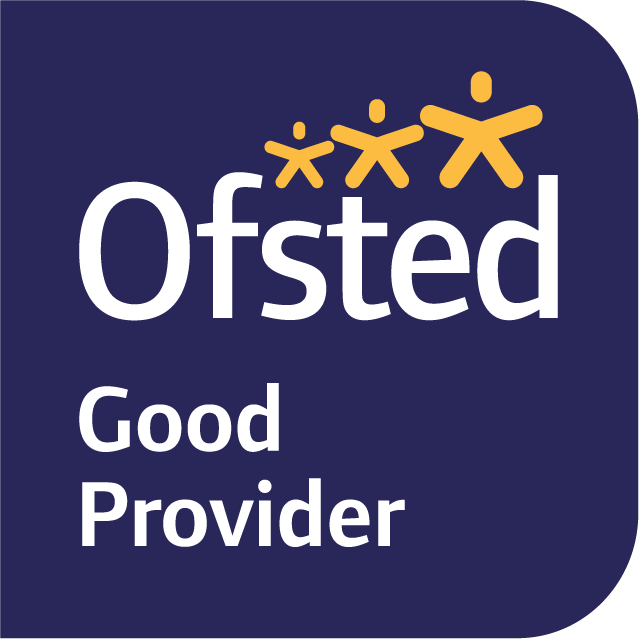
Mathematics
Curriculum Information about Mathematics at King James I Academy
Teaching Staff
- R Graham (Director of Learning)
- R Glen
- S Binns
- P McArdle
- M Brown
- A Curtis
- R Coy
- M Saunders
- C Butters
- V Ward
Our Curriculum Intent
At King James I Academy, the Mathematics department’s intent is for the curriculum to be designed to ensure that students acquire a deep, long-term, secure, and flexible understanding of the subject. The curriculum will:
· Develop students’ ability to reason mathematically
· Enable students to become fluent in the fundamentals of mathematics through frequent and varied practice with increasingly complex problems over time such that they will develop conceptual understanding and the ability to recall and apply their knowledge speedily and accurately
· Allow students to solve problems by applying their mathematics to a variety of routine and non-routine problems with increasing sophistication, including reducing problems into a series of simpler steps and persevering in seeking solutions whilst appreciating various methods may be applicable
· Help students to develop an appreciation of the beauty and power of mathematics and have a sense of enjoyment and curiosity about the subject
· Enable students to reason mathematically by following a line of enquiry, conjecturing relationships and generalisations, testing hypotheses, and developing an argument, justification or proof using appropriate mathematical language
Department Information
What types of skills do employers look for? Problem solving, statistical analysis, proportional reasoning, and good communication skills, to name just a few. These transferable skills are useful in any job, and you can get all of them from studying Maths.
Maths is studied by all students until the completion of Year 11. Success in Mathematics is a key component to future career success with most employers now requiring a minimum of a GCSE Grade 4. Teachers in the Maths Department believe that all students are mathematically able and work to support our students in becoming numerically literate.
Students at King James I Academy are taught in ability groupings, which allows us to tailor their learning experience to their current stage of mathematical development. Following each assessment period, the classes are reviewed and amended as needed in order to challenge and support our students in a way that will best suits their needs.
Our curriculum is designed to build upon prior learning established at primary school, to support their progression in becoming mathematically fluent, and to further their ability to reason logically and solve problems in a wide range of situations. Some of our more able students are invited to take part in the United Kingdom Mathematical Trust’s individual and team challenges, attend Christmas Lectures at local universities, and compete in regional maths competitions.
Key Stage 3
Year 7
Students will consolidate and extend their learning from primary school and will delve further into Algebra topics. They will also be introduced to probability and begin using calculators to support their written methods. A strong emphasis will be placed on securing fluency of basic skills before progressing on to new topic areas
Year 8
During Year 8, students will develop their understanding of more complex mathematical processes. They will continue to apply the skills developed in Year 7 and deepen their reasoning and problem-solving skills.
Year 9
In the final year of KS3, students will continue to apply the skills developed in Years 7 and 8. They will develop their knowledge and understanding of the various disciplines covered so far in Key Stage 3 progressing towards mastery of these skills. A range of new mathematical topics will also be introduced to prepare students for Key Stage 4
|
Year 7 |
Year 8 |
Year 9 |
|
HT1: Basic number catch up – working with integers using mental and formal written methods, time calculations, and topics informed by CAT testing and baseline assessment (this will vary year on year based on student results) |
HT1: Number: HCF, LCM, prime factors, powers and roots, Shape: parallel lines, geometric properties of quadrilaterals, translations, enlargements, constructions, Probability: mutually exclusive, sample space diagrams, relative frequency |
HT1: Percentages – simple interest, multipliers, reverse percentages, successive percentage change. Algebra – expand brackets, factorise expressions, equations with variables in denominator of the fraction. Polygons –exterior/interior angles and tessellations |
|
HT2: Number- Money calculations, directed numbers, Decimals – order, 4 operations, Algebra – sequences – recognise, describe and continue, Number types - square numbers and triangular numbers, Geometry – perimeter, area and volume |
HT2: Percentages – calculate, increase/decrease, percentage change, Sequences – nth term of linear, Fibonacci sequences, Congruency – recognise, conditions for congruent triangles, Geometry – Area, Surface Area and Volume of Prisms including metric units for area and volume |
HT2: Data – scatter graphs and correlation, two-way tables, estimated mean, cf diagrams. Graphs – step-graph, time graph, exponential growth. Pythagoras Theorem – introduction, missing sides, solving problems, apply the converse |
|
HT3: Written methods for division and multiplication, order of operations, rounding, calculations with measurements, Statistics – averages and range, statistical diagrams, data collection process, Expressions – write, simplify, and substitute into, Formulae – write and substitute into, |
HT3: Graphs – Linear equations, gradient of a line, quadratic graphs, real-life graphs, Number – powers of 10, significant figures, standard form, Data – interpret charts in the media, relative-sized pie charts, scatter graphs and correlation |
HT3: Fractions – four operations and algebraic fractions. Algebra – expand brackets, factorise quadratics, DOTS. Number – powers of 10, standard form, multiply and divide standard form values, upper and lower bounds |
|
HT4: Fractions – equivalent, compare, add and subtract, mixed numbers and improper fractions, Angles – measure and draw, basic angle facts, parallel lines, angles in triangles and quadrilaterals, Coordinates and Linear Graphs, Real life graphs |
HT4: Algebra – simplify expressions, expand brackets, use index notation, Shape and Ratio – ratio of lengths, areas, and volumes, enlargements using a fractional scale factor, read map scales, scale diagrams |
HT4: Surface area and volume of prisms, cylinders and composite shapes, Solve equations graphically – implicit, simultaneous equations, quadratics, cubics |
|
HT5: FDP, Fractions of an amount, Percentages of an amount, Percentage increase or decrease, Probability – scale, sample space diagrams, experimental probability Symmetry, Transformations, and Tessellations, |
HT5: Fractions – add and subtract, multiply and divide fractions and integers, Mental Methods for multiplication and division, Proportion – direct and inverse, Circles – circumference and area |
HT5: Compound measures – speed, density, unit cost (best buys), Trigonometry – SOH CAH TOA for missing sides and missing angles, Algebraic Proof Intro, Geometric Proof Intro |
|
HT6: Equations – write equations, solve 1-step and 2- step equations, Interpret Data – pie charts, compare data sets, and statistical surveys, 3D shapes – name, draw, nets, V+F = E+2, Ratio – compare quantities, write, simplify, 1:n form, scale up, divide in a ratio, link to fractions |
HT6: Equations – solving equations with brackets, 2-sided, and fractional coefficients, Re-arrange formulae, Compare data: grouped data, draw frequency diagrams, misleading charts, Ratio and Proportion – best buys, currency exchange, Number – estimation and approximation, calculations with bounds |
HT6: Probability – independent and combined events using tree diagrams, Geometric Sequences – introduction, generate and identify from nth term and term-to-term rules, Algebra - Simultaneous Equations by elimination and substitution, Inequalities |
Learning Journeys
Higher Maths
| Year 7 | Learning Journey - Higher Maths - Year 7.pdf |
| Year 8 | Learning Journey - Higher Maths - Year 8.pdf |
| Year 9 | Learning Journey - Higher Maths - Year 9.pdf |
Foundation Maths
| Year 7 | Learning Journey - Foundation Maths - Year 7.pdf |
| Year 8 | Learning Journey - Foundation Maths - Year 8.pdf |
| Year 9 | Learning Journey - Foundation Maths - Year 9.pdf |
